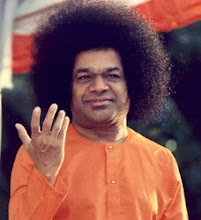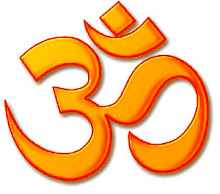As we ponder over the analysis of the last chapter, the question naturally arises, ‘When did all this happen?’
Astronomical and geological evidence seems to suggest that the Universe as we know it may be about 13,700 million years old. Wow! That seems to be huge! Of this, on the basis of geological and paleontological work, the Earth as we know it appears to be at least 4500 million years old. There is a close correlation between the estimated age of the Sun and that of the Earth and the Moon. They all seem to be near each other, perhaps indicating that after the Sun came into being, both the Earth and the Moon followed quite soon thereafter.
In this huge time span, the appearance of the human species is placed at barely 2 million years ago. Most of this estimation is from anthropological evidence and the most recent 11000 years seem to be through a mixture of archaeological and historical evidence. Of this the post Christian era where a lot of written evidence is available is just 2010 years.
This method of analysis is called the Linear Method of Time Measurement starting from the beginning and going on till now. Dr Stephen Hawking, the brilliant scientist who even now works at Cambridge University, calls the starting point as the Big Bang when the Universe started forming. His method of estimation is largely based on mathematical computation.
Contemporary human civilization has greatly benefited from the investigations of modern science and astronomy aided with a tremendous sophistication of instrumentation and equipment, space exploration and the direct evidence of the geological structure of the Moon and Mars through the landing of space craft and men. The Hubble telescope which is placed in outer space is itself a source of all sorts of evidence on the nature of the Sun and the happenings in outer space in distant galaxies.
One important conclusion that science has reached is that the Universe as we are currently able to understand it, is expanding. So the question arises, ‘What will happen? How far will it expand? What is the time line?’
Let us come down to basics at our personal level. How do we perceive time?
We understand time from our daily life as the succession of days and nights. The dawn arises and the day follows. At some point it starts darkening and night falls. Is that the end of it? Not at all. Because another day dawns and the cycle repeats endlessly. At some point of time in our life, we realize that this is because the earth rotates round and round endlessly. That is why we experience days and nights. This then is the basic foundation of our appreciation of time.
Then we start noticing that the relative lengths of days and nights vary. The days are short and the nights long. Then slowly the days and nights seem to come closer to each other in length. Then the days become comparably longer and nights shorter. After that again we find that the days have become shorter and nights longer. This then is a larger cycle that encompasses, as it were, the day/night cycle. Again, at some point of time in our life, we realize that this variation in the relative lengths of days and nights is because of the revolution of the Earth round the Sun.
Not only do the relative lengths of days and nights vary because of revolution round the Sun, but the entire environment seems to change. For example, the season of Spring is here nowadays. Trees are sprouting leaves, flowers are appearing, birds are calling and building nests, and bees are buzzing. Then the heat seems to increase until, in some parts of the Earth, it is impossible to go out at midday, because it is so hot. The Sun seems to blaze and dry winds blow. When we have started thinking that we simply cannot manage to survive, suddenly clouds seem to gather and the sky is overcast. Lightning sends crackling electrical signals and thunder booms and lo and behold, sheets of rain fall for days together and the whole atmosphere is damp and watery. And then the sky seems to clear and the world is somnolent and sleepy and the fields sprout with life and the leaves turn into a landscape of beautiful colors. We call it Autumn or Fall. And then the snow may fall, the temperatures fall and the landscape changes into a cold, dark one. When we have started to think that this is the end of our life, then suddenly Spring is here again. This cycle is the same as the revolution cycle and is called the Seasons.
Our most basic appreciation of time is circular or cyclic. It is certainly not linear and proceeding on and on without end.
The ancients in all parts of the world based their concept of Time on this fundamental cyclicality. In Indian thought, where the knowledge has fortunately been preserved for literally millions of years, Time is cyclical. Everything that happens in the Universe repeats. This is stated in the Vedas and in clearer terms in the subsequent elucidations called the Puranas and other treatises. In particular, the Bhagavata Purana gives a clear description of the nature of the Universal Cycle of Time. This is further elaborated in what is known as the Surya Siddhanta, an authoritative astronomical and mathematical treatise, which forms the basis for the ‘Panchangam’ or Indian Calendar which is mathematically calculated every year at the time of Ugadi. There are two methods of calculation based respectively on the Lunar System and the Solar System. Ugadi follows the Lunar System and the Baishaki/Tamil New Year /Vishu festival celebrates the Solar System.
In the Indian system where does the current moment of time figure? For this we need to understand the Indian concept of the Cycles of Time. The overarching or overall Cycle is called the Day of Brahma or a ‘Kalpa’. This extends to 4320 million years. The Day of Brahma is followed by a Night of Brahma which is of equal duration, that is, 4320 million years.
The current Kalpa is called the Sweta Varaha Kalpa. It is the fifty first such Kalpa since the beginning of Manifestation.
Each Kalpa comprises 14 sub-periods called ‘Manvantaras’. We are said to be in the 7th such Manvantara of this Kalpa. Thus each Manvantara is 308.57 million years. The present Manvantara is called the ‘Vaivasvata Manvantara’. Six such Manvantaras have already passed. We are in the seventh.
Each Manvantara comprises a succession of another Cycle called the ‘Mahayuga’. Each Mahayuga comprises four Yugas called the Krta ( or Sathya) Yuga followed by the Tretha Yuga followed by the Dwapara Yuga followed by the Kali Yuga.
The duration in years of these Yugas is given as:
Krta Yuga 1,728,000 years or 1.728 million years.
Tretha Yuga 1,296,000 years or 1.298 million years
Dwapara Yuga 864, 000 years
Kali Yuga 432,000 years
It will be noticed that the duration of the Yugas is in the proportion of 4:3:2:1.
Thus each Mahayuga, comprising a total of these four Yugas is thus 4,320,000 years or 4.32 million years.
As it is stated that a Kalpa comprises 1000 Mahayugas, one can derive that the duration of each Manvantara is 1000/14 = 71.428 Mahayugas often stated as 71 Mahayugas. Our present Mahayuga is stated to be the 28th of our Manvantara. We have approximately completed 118 million years since the present Manvantara started.
It is also stated that six Manvantaras have elapsed in this Kalpa which comes to 6 x 308.57 = 1851.42 million years. So we are at present at 1851.42 + 118 = 1969.42 say 1970 million years since the beginning of this Kalpa.
It is stated that this is the 51st Kalpa since the current Day of Brahma commenced. It is also clarified that at the end of each Kalpa and at the beginning of each Kalpa there is a period of twilight and dawn respectively of the duration of a Krta Yuga, that is, 1.728 million years. This means that we have to add 3.556 million years to each completed Kalpa which makes the Kalpa duration to be 4320 + 3.556 = 4324 million years approximately. Thus the beginning of our Kalpa stands at
50 x 4324 = 216200 million years or 216 billion years.
This is far more than the 13,700 million years that is mentioned in scientific investigations. However the 4320 million years of a Kalpa duration seems to correlate somewhat with the geological/paleontological time line of 4500 million years as an estimated age of Earth and nearly that of the Moon.
So this could mean that the age of the Earth as estimated by science may be on the lower side and the Earth as a planet existed during earlier Kalpas too. It is a moot question whether life existed on Earth during earlier Kalpas. Indeed the Theosophical Society has a definitive concept that the life principle has migrated from planet to planet over time. They state that before life became prevalent on Earth it existed on the Moon. And they believe that after this Kalpa is completed life will migrate to Mars.
But in what way do all these considerations apply to us in our little lives? How does it matter when life began on Earth or whether it existed elsewhere or not? Over the time lines we have been talking about, human existence is conclusively proved by science to have commenced only some 2 million years ago. So let us look a little carefully as to what the ancients say about this.
We are said to be in the middle of a Mahayuga. The Krta, Tretha and Dwapara Yugas of our own present Mahayuga have already elapsed. That means 1.728 + 1.296 + 0.864 = 3.888 million years of this Mahayuga Cycle have elapsed. After this 5110 years of the present Kali Yuga have elapsed. During this time, when did man appear? Science with the help of radiometric dating and stratigraphic time measurements of rocks and other objects places the appearance of the human being at about 2 million years ago. What is 2 million years ago according to the Yuga measurement? That is 5110 years of the Kali Yuga, plus 864000 years of the Dwapara Yuga plus 1296000 years of the Tretha Yuga = 2165110 years or 2.16 million years ago.
One can thus say, with some conviction based on both the scientific evidence and the Indian system of Yugas that the human species appeared in the Tretha Yuga.
It is a poignant realization that the great human called Sri Rama appeared on Earth sometime in that Yuga. Was it at the end of the Yuga when there was a need, as the Ramayana states, for a clear delineation of the concepts of ‘humanness’ for mankind to survive in the face of other negative forces represented by the likes of Ravana and his hordes. The Ramayana states that in Sri Rama’s time there were broadly three main human and semi-human species, the Manavas, the Vanaras and the Danavas. Sri Rama represented the best of the Manavas. Sri Hanuman represented the best of the Vanaras, a kind of ape-like creatures who could communicate with the others. Ravana represented the Danavas, a kind of magic-oriented species who could relate to the Manavas and the Vanaras and who could stoop to all levels to achieve his ends. Did the great war of the Ramayana take place somewhere at the end of the Tretha Yuga setting the stage for a more difficult age, the Dwapara Yuga, to follow? Did the human species which is said to have been very tall and powerful in Sri Rama’s time gradually transform into another species typical of the Dwapara Yuga?
As one looks at these expanses of time and studies the geological, paleontological and other scientific studies of our age, and similarly the statements of the Surya Siddhanta, the Bhagavatham, and the Ramayana, one truly feels humbled. What is required is an open mind that does not reject either the evolving scientific evidence nor the ancient scriptures.
Time may ultimately be proved to be cyclical and repetitive. This truth is relevant for us not only to understand our daily cycles, or our seasonal cycles but also the far vaster cycles of time of which we are a part. Life itself may turn out to be repetitive. Is this my first time on Earth? Or have I been here before? Where was I in an earlier visitation? Was I a man or a woman or an animal or a plant or any of those literally millions of living species which are all around me? These are profound questions that arise and we have to find answers in order to make our lives more meaningful.
It is also happening. We discovered a wonderful attempt to understand and explain all this by a remarkable man in Lima, Peru. He has studied not just the Indian thought but similar streams of thought from many of the oldest civilizations including the Aztec civilization native to his country. Please visit his website and read his masterly analysis at :
http://miguelgoitizolo.ws/TheWheelofTime.htm
For fairly comprehensive and concise articles on the scientific approach and Indian system you could see :
http://en.wikipedia.org/wiki/Geologic_time_scale
and
http://en.wikipedia.org/wiki/Surya_Siddhanta
The original English translation of the Surya Siddhanta is also available free for downloading on the Web.
The beauty about Time is that it is permanent.
For now let us stop here pondering about the beauty of the Universe. This month sees several important dates in the timescale. This is the eventful month when Easter comes along and it not only brings with it the smells and tastes of Spring, but it also reminds us of another wonderful human who revolutionized the way man relates to man, Jesus. He appeared 2010 years ago and changed the world with His sacrifice of His life for a principle. April also brings the Baishaki/Tamil New Year/ Vishu festivals of the Solar Calendar in India. It was in this month that another contemporary person called Sri Ramana Maharishi left His body in a place called Tiruvannamalai in Tamil Nadu in India.
A friend recently shared a most fascinating website with us which takes you on a Virtual 3D tour of the Holy Sepulchre at Jerusalem which is said to be the site of the place where Jesus was crucified and also the grave where He was buried. You may enjoy this trip in this Easter month.
http://www.360tr.com/kudus/kiyamet_eng/index.html>
All this reminds us of another cyclicality in the world, the cycle of Creation, Sustenance and Transformation.
On this note we say farewell to you all and hope you are finding it interesting and intriguing. We do hope to keep hearing from you and seeing your comments and contributions on the blog.
Warm regards and God Bless
Friday, April 2, 2010
Subscribe to:
Posts (Atom)



